Home Style Guide: Colonial
Traditional color palettes or bolder modern hues? Capture the character of a colonial home and celebrate your distinct style with Hardie® fiber cement siding.
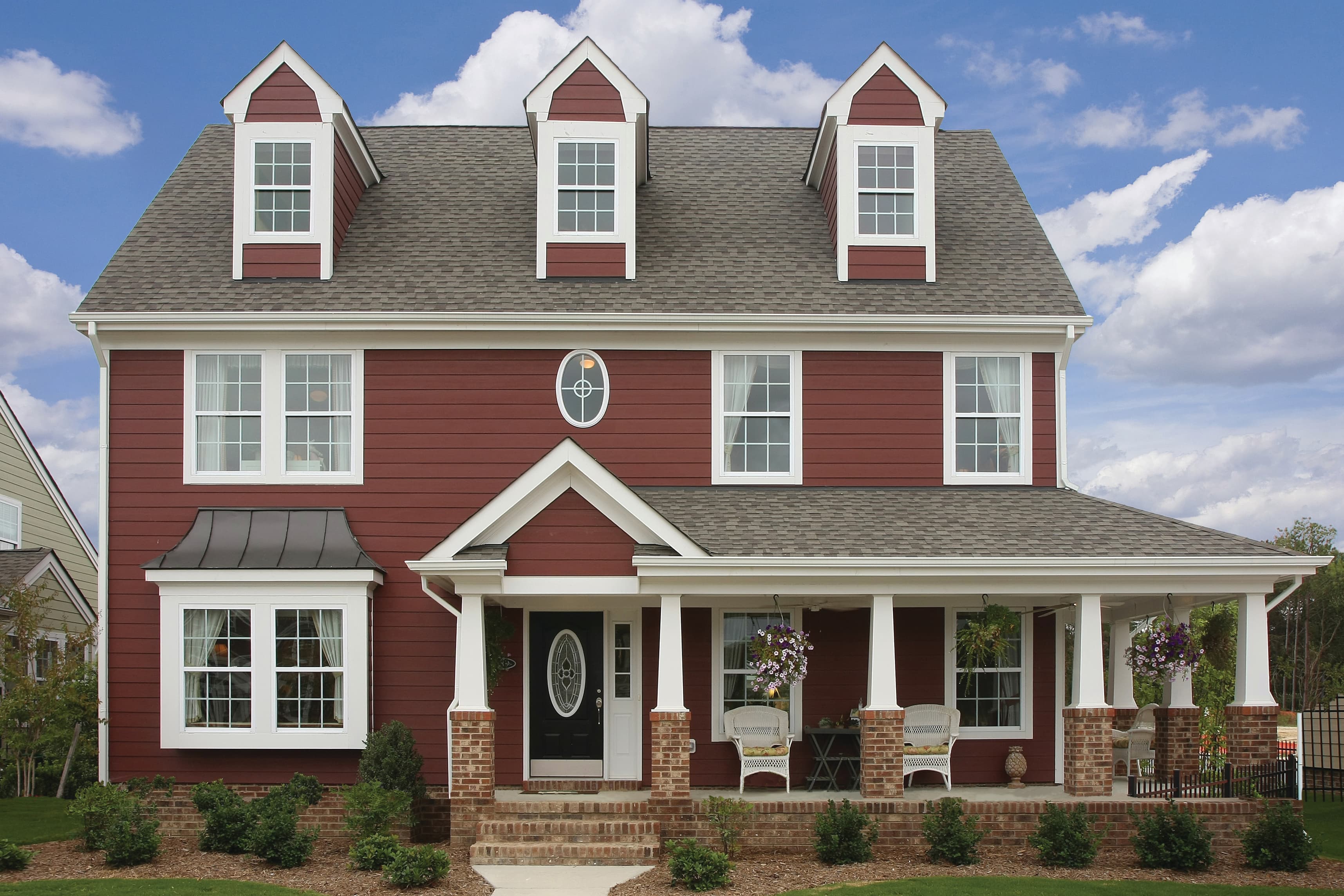
When it comes to American architectural styles, Colonial is quintessential — after all, colonial architecture is practically as old as the country itself. First built under colonial rule in the 1600s and 1700s, colonial-style homes have maintained a timeless elegance for over 400 years. Discover how you can reimagine these classic structures.
WHAT IS COLONIAL ARCHITECTURE?
Marked by their unmistakable rectangular shape, centered front doors, and symmetrical windows, colonial-style homes feature balanced proportions with traditional designs. Today, the term “colonial” typically refers to the architectural style introduced by British colonists in New England, which were timber-framed wood houses with decorative shutters and simple trim.

However, as the original colonies expanded to other areas of the country, settlers began to tweak the original colonial architectural style to accommodate the shifting geography. So, it’s common to find Dutch colonial homes with double-pitched roofs further down the East Coast, and French colonial homes with elevated foundations and high ceilings in the Southeast, for instance.
Despite the emergence of other architectural styles, the country experienced a colonial revival between 1880 and the mid-1950s to celebrate America’s centennial anniversary. Fast-forward to the 21st century, and you’re likely to find colonial-style homes in just about every state in America, whether you’re located in New England, New Jersey or even New Mexico.
KEY ARCHITECTURAL FEATURES OF THE COLONIAL STYLE
With the nationwide presence of colonial architecture, you might be curious if your home falls under the category of colonial style. Traditionally, colonial-style homes have a highly symmetrical facade, with evenly spaced windows, centered front doors and balanced chimneys — one or two depending on the size and location of the home.
Beyond their primary structure, colonial-style homes are often designed with a grand entryway to achieve the look of timeless elegance. Decorative elements like symmetrical front entrance columns, pediments placed over the front door and windows, and sidelights on either side of the entryway create a warm, welcoming exterior.
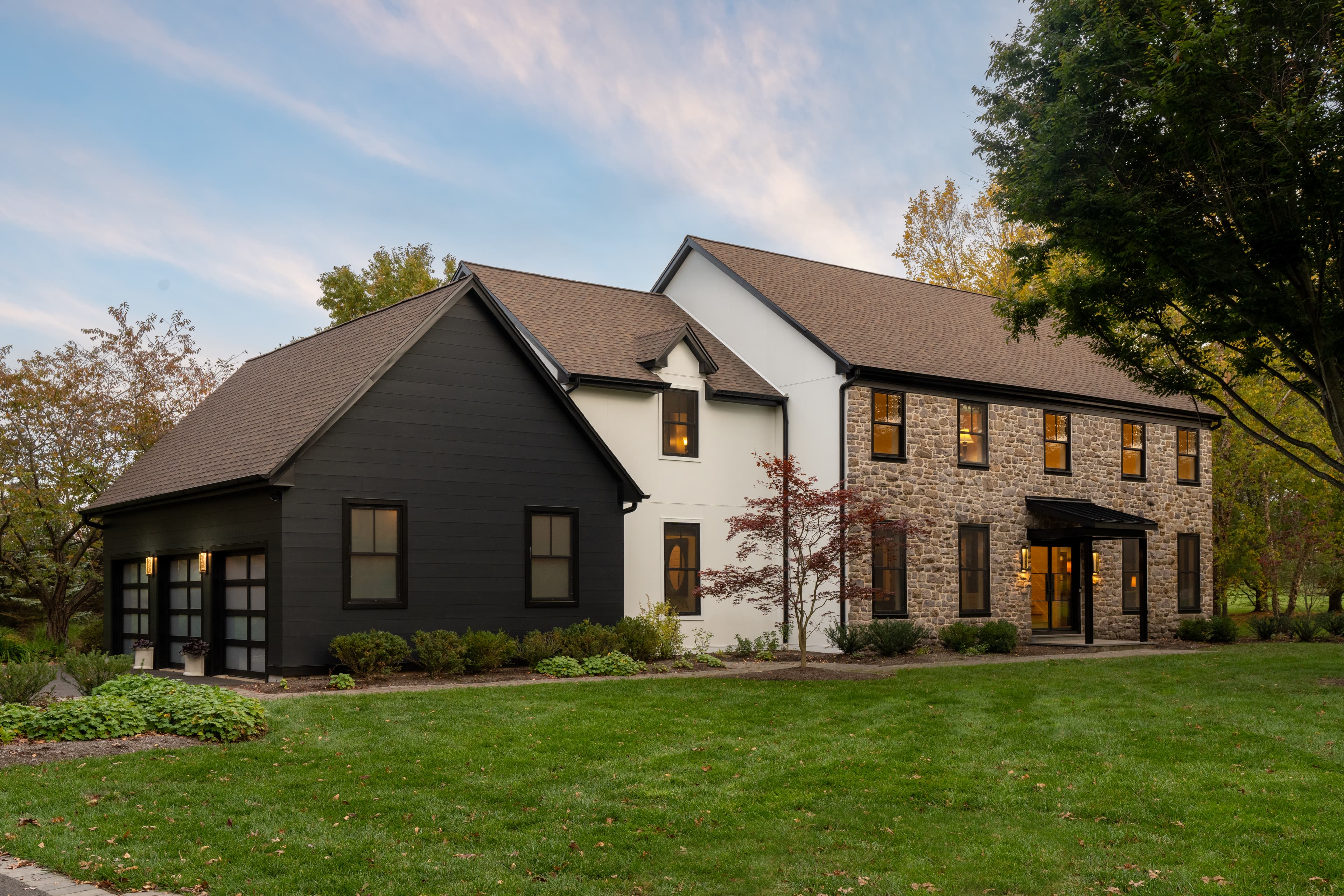
Another key architectural feature of the colonial style is intricate trim detail. It’s common to find older colonial homes with elaborate crown and dentil molding. Colonial-style homes also include decorative window casings and window shutters, which are often painted in different colors from the home’s pitched roofs and side gables.
Since the early colonial-style homes were built in the heavily forested region of New England, traditional colonial architecture features wood exteriors. However, more homeowners are opting to preserve their home’s history with modern materials, such as Hardie® fiber cement siding that mimics the look of wood grain, for enhanced durability. For that trim detail finishing touch, Hardie® Trim boards offer resistance against damp and cold conditions, as well as heat and humidity, serving as an excellent substitute for wood in creating an attractive finish.
CAPTURE THE CHARACTER OF COLONIAL STYLES
Original colonial-style homes featured long, horizontal cedar clapboards with wooden doors and shutters, though brick exteriors are also common among French colonial homes in the Southeast. To capture that traditional colonial character when planning a siding project, it’s wise to opt for classic horizontal lap siding.
If you’re ready to reimagine your home’s colonial style while paying homage to its historical roots, explore Hardie® Plank lap siding in Select Cedarmill® . The unique texture of Select Cedarmill® siding gives the appearance of colonial-era clapboard but has been specifically formulated to resist damage from moisture and pests.
Here are three strategies to maintain — and maximize — your home’s colonial charm.
1. Preserving Colonial style with a classic color palette
If you want your home’s new siding to mirror that of the early American settlers, experiment with muted, neutral colors. Because most materials were raw, you’ll want to create a color palette of rich tans, creamy beiges and off-whites, with darker tones to accentuate trim, shutters and roofing.
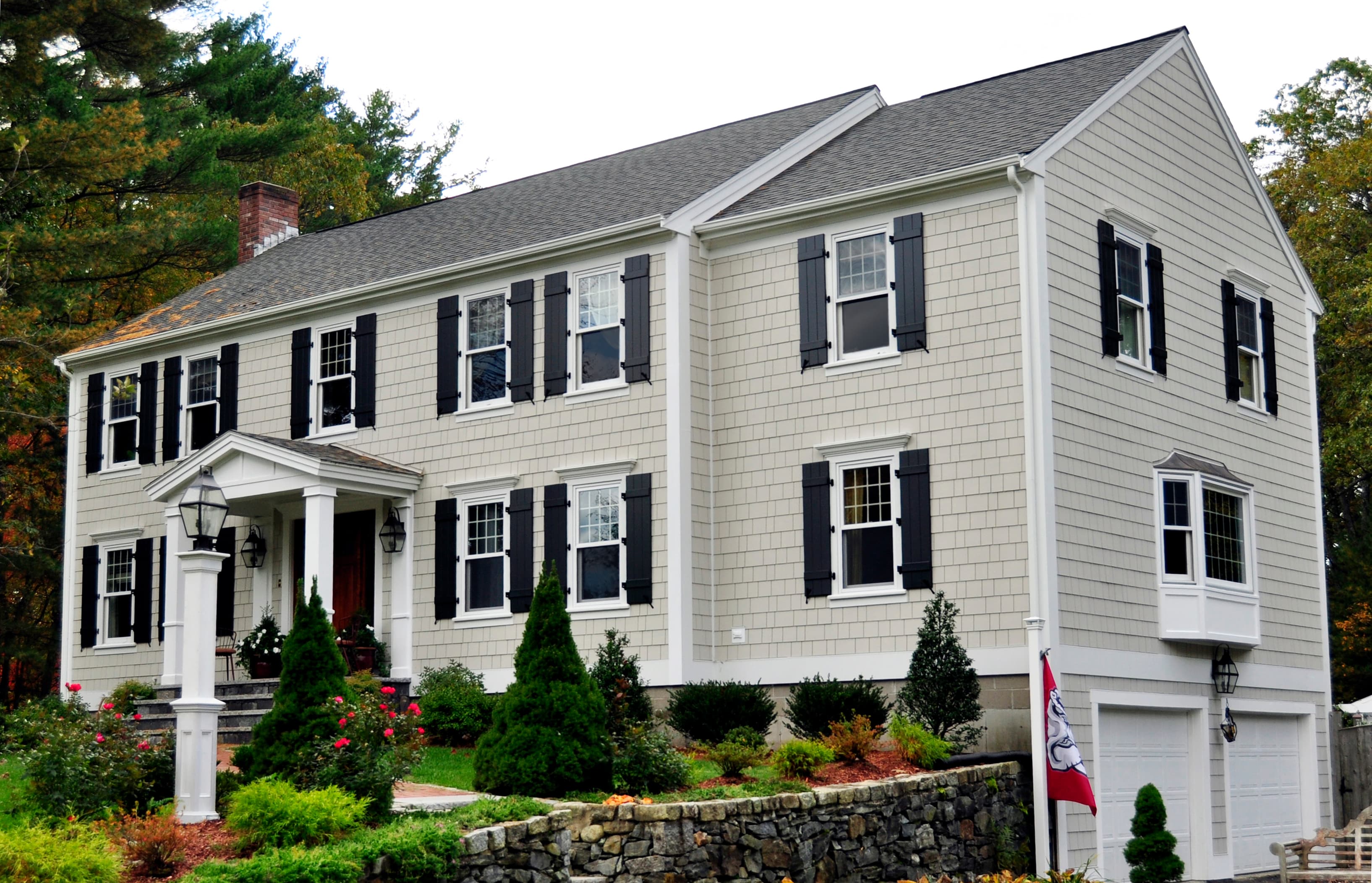
The James Hardie Statement Collection® finishes have several siding and trim colors to help preserve a classic colonial home. Opt for exterior siding like Hardie® Plank Select Cedarmill® Siding in Navajo Beige for a raw wood look, and complement it with the rustic grain of Hardie® Trim in Timber Bark.
2. Elevating Colonial style with contemporary flair
If you’re looking to refresh your colonial-style home with a blend of traditional and contemporary siding materials, choose lap siding with a smooth texture. For instance, the Hardie® Plank Smooth Siding in Arctic White allows for a more refined look that’s still quintessentially colonial style.
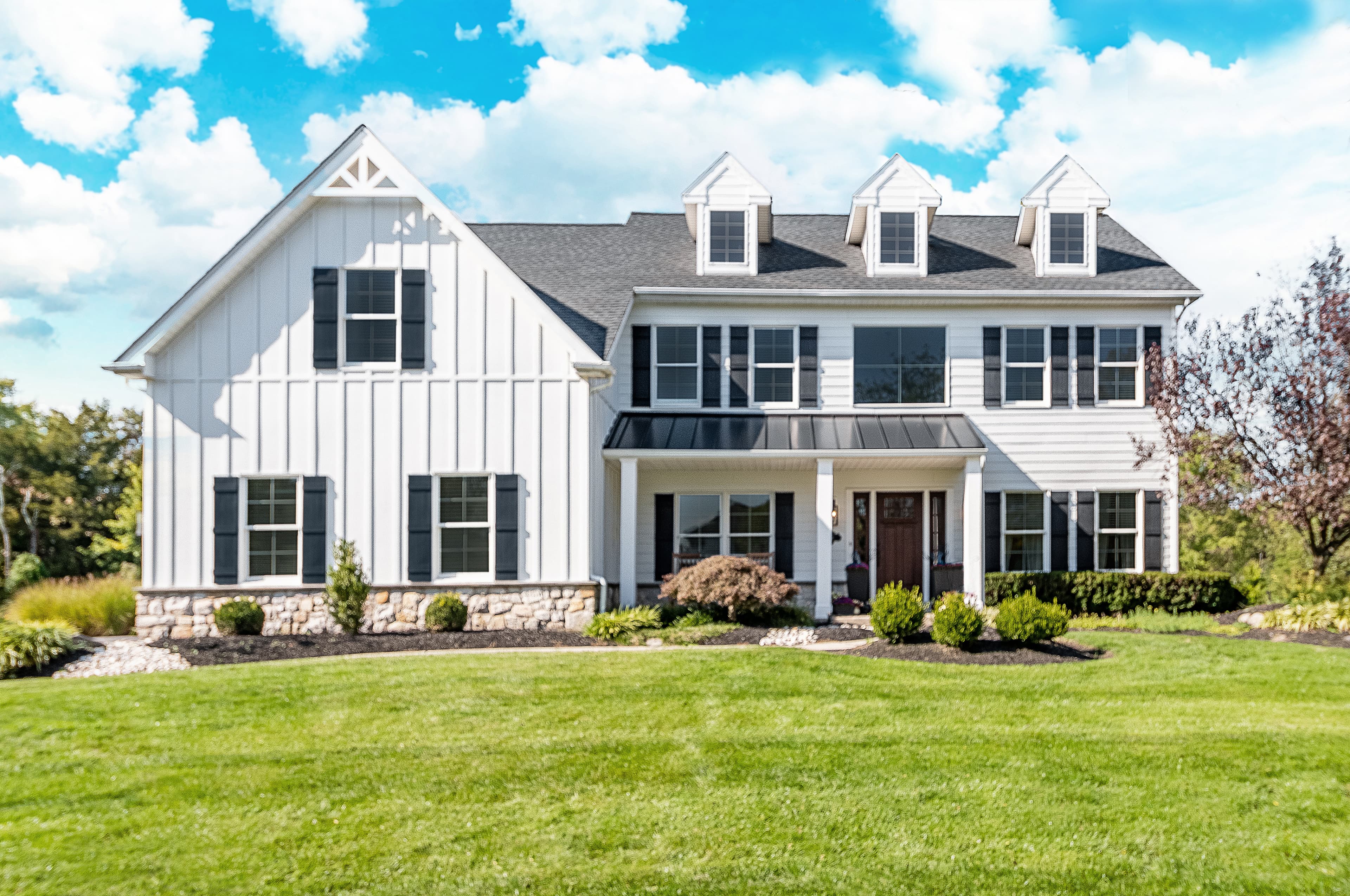
For a more distinctive exterior, incorporate a refined color palette of quiet neutrals. Hardie® Plank Smooth Siding in Pearl Gray is a subtle shift from traditional colonial colors, which can be beautifully accented by the smooth texture of Hardie® Trim in Iron Gray.
3. Reimagining Colonial style with bolder hues
If you’d prefer to honor the architecture of your colonial-style home with colors that align with your personal style, several combinations can transform the traditional colonial palette into dynamic colorways. Bold hues like deep reds and regal blues elevate the classic colonial style.
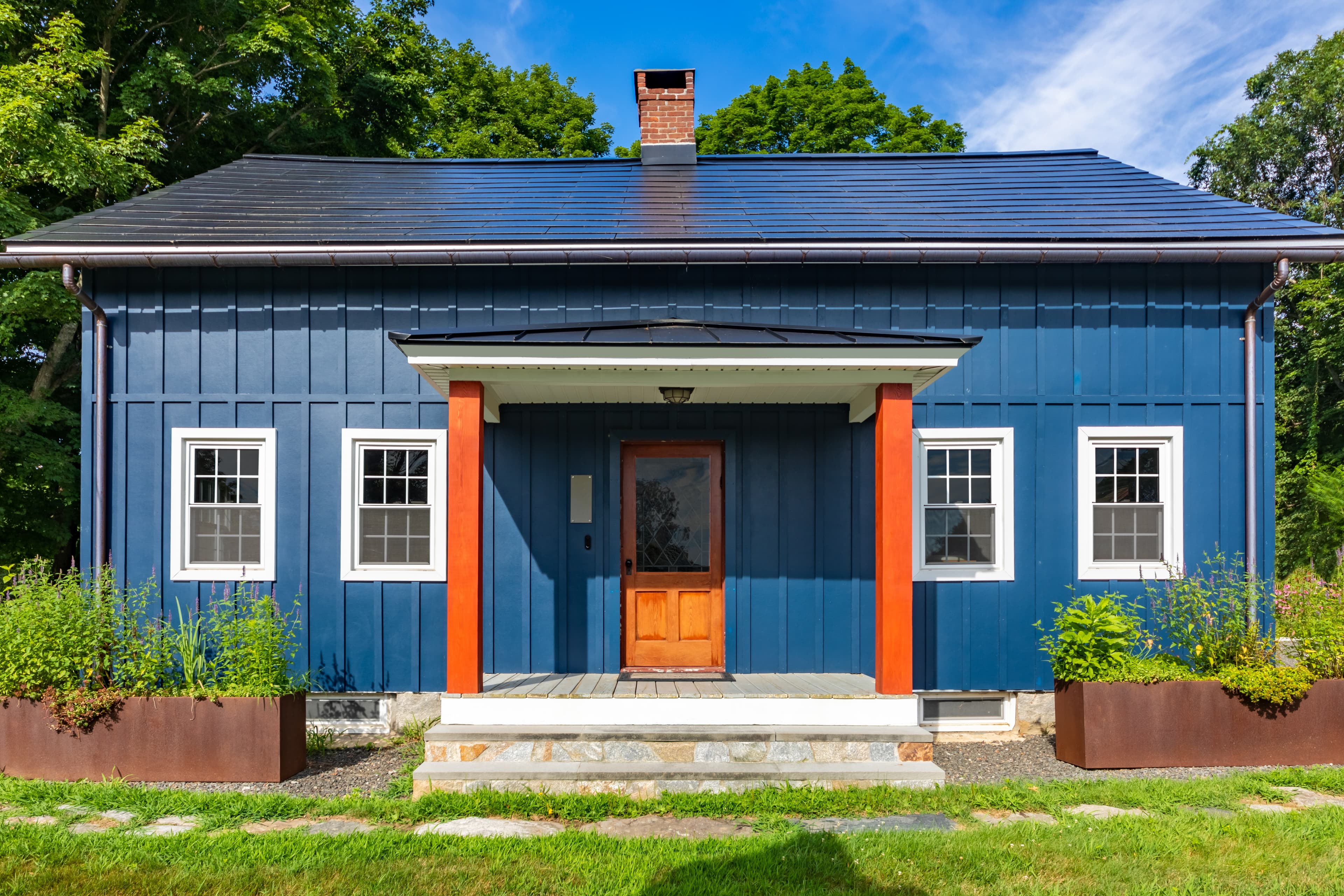
Just take design guidance from today’s most popular house colors. One option is Hardie® Plank Select Cedarmill® Siding in Countrylane Red, with eye-catching Hardie® Trim in Arctic White. Another is Hardie® Plank Smooth Siding in Evening Blue with Hardie® Trim in Iron Gray.
TRADITIONAL DETAILS WITH ENHANCED DURABILITY
Colonial architectural styles were the blueprint for American homes. However, it’s no secret that technology has dramatically changed since the first colonial-style home was built. Hardie® siding and trim products allow you to pay homage to your classic colonial’s historical roots, all while being engineered to resist wet and freezing conditions and hot, humid weather.
Explore James Hardie’s vast Product Catalog today to begin reimagining the exterior of your colonial-style home. If you’re struggling to decide which color palette will maintain your home’s colonial charm and maximize your unique style, head over to the Hardie™ Designer, powered by Hover®, to visualize the complete collection of Hardie® sidings and color combinations.